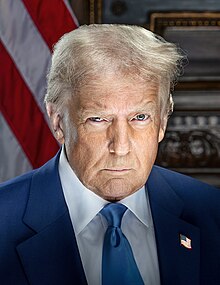
United States President Donald Trump is preparing to sign an order on Saturday that will enforce steep tariffs on imports from three of the country’s largest trading partners.
The new measures include a 25% tariff on goods from Mexico and Canada and a 10% tariff on imports from China, a move that could disrupt more than $2.1 trillion in annual trade.
Speaking from his Mar-a-Lago estate in Florida on Friday, Trump indicated that there was little Mexico, Canada, or China could do to prevent the tariffs. He set a February 1 deadline, aiming to push these countries to take stronger action against the flow of fentanyl and its precursor chemicals into the U.S. and to curb illegal immigration at both the northern and southern borders.
During an exchange with reporters at the White House, Trump dismissed suggestions that the tariffs were being used as a negotiating tactic.
“No, it’s not … we have big (trade) deficits with, as you know, with all three of them,” he said.
Trump also suggested that revenue considerations could lead to even higher tariffs. “But it’s a lot of money coming to the United States,” he added.
Possible Exemptions and Expanding Tariffs
The president signaled that Canadian oil could receive a lower tariff rate of 10%, compared to the 25% imposed on other Canadian goods. However, he also hinted at broader tariffs on oil and natural gas set to take effect in mid-February, remarks that contributed to a rise in oil prices.
Crude oil remains the largest U.S. import from Canada, with nearly $100 billion worth imported in 2023, according to U.S. Census Bureau data.
Economic Impact and Industry Concerns
While acknowledging that the new duties could lead to increased costs for consumers and short-term economic disruptions, Trump downplayed concerns about their impact on financial markets.
Jake Colvin, president of the National Foreign Trade Council, which represents major U.S. corporations on trade policy, warned that the tariffs could drive up prices on essential goods.
“Imposing tariffs on key U.S. trading partners could impact the cost and availability of everything from avocados to air conditioners to cars and risks shifting the focus of our relationships away from constructive dialogue,” Colvin said.
Automakers are expected to be particularly affected, as vehicles assembled in Canada and Mexico—along with components that frequently cross borders during production—would face higher costs.
Trump also hinted at more trade measures on the horizon, stating that tariffs were being considered on European goods, steel, aluminum, copper, pharmaceuticals, and semiconductors.
White House spokesperson Karoline Leavitt confirmed that the tariffs would take effect immediately, with further details to be released on Saturday.
Retaliation Likely from Trading Partners
The tariff move is expected to trigger retaliatory actions from U.S. trading partners. Canada has already drafted a list of immediate countermeasures, including tariffs on Florida orange juice, according to a source familiar with the plan.
Canada’s broader list of potential retaliatory tariffs could target up to C$150 billion ($103 billion) worth of U.S. goods, but officials plan to hold public consultations before finalizing the response, the source added.
Mexican President Claudia Sheinbaum has also warned of retaliation but emphasized a measured approach, saying she would “wait with a cool head” for Trump’s decision while keeping border negotiations open.
China has been more reserved in its response but has vowed to defend its trade interests.
“There is no winner in a trade war or tariff war, which serves the interests of neither side nor the world,” a spokesperson for Beijing’s embassy in Washington said, reaffirming China’s opposition to the tariffs.
As tensions rise, the global trade landscape faces heightened uncertainty, with businesses and consumers bracing for potential economic fallout.





